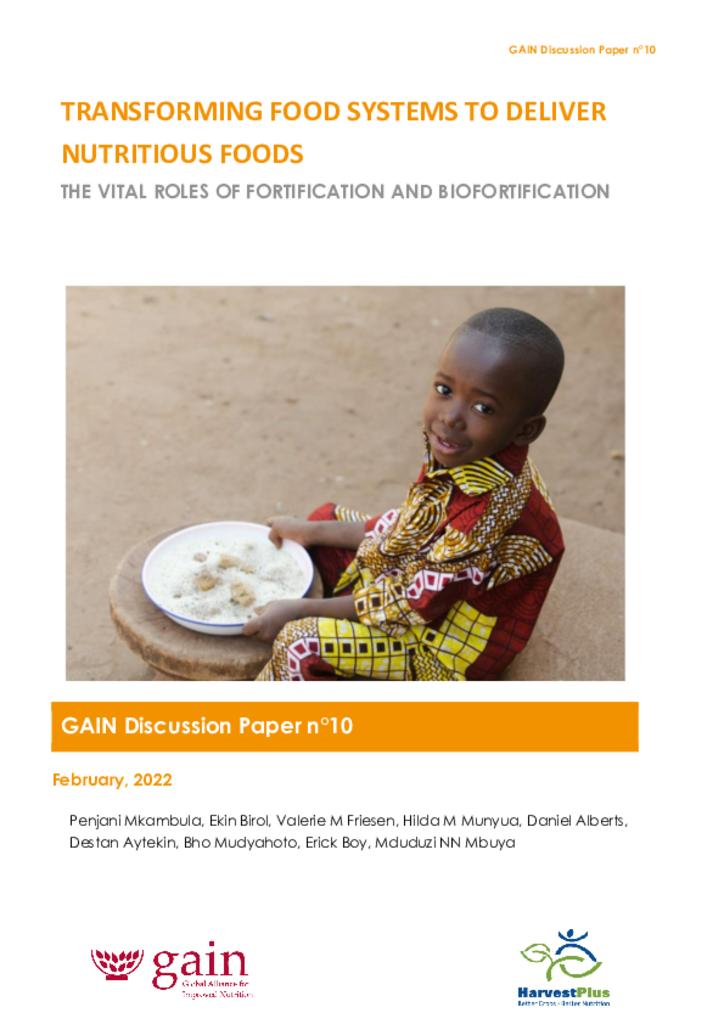An estimated 2 billion people globally are affected by micronutrient deficiencies, while around one third of the global population is at risk of at least one micronutrient deficiency. Micronutrient deficiencies, also known as hidden hunger, can be linked to significant disease burden and economic loss. Food-based approaches to tackling micronutrient deficiencies include improving the micronutrient content of widely consumed foods through large-scale food fortification or biofortification, both of which have been proven to be efficacious, cost-effective, and scalable in increasing micronutrient intakes and improving associated biological outcomes.
The literature is replete with evidence on the efficacy, acceptability, and cost-effectiveness of each of these approaches but with few discussions of their complementarity. In this paper, we present a narrative review of food fortification and biofortification and highlight their complementary roles in helping transform food systems to deliver healthy and accessible foods for all.
We find that there are three critical conditions required to maximise the potential impact of these two complementary interventions: 1) programmes aligned with the needs, constraints, and opportunities of the population in terms of consumption patterns, supply chains, and market structures; 2) easy-to-implement, cost-effective, and real-time monitoring of programme delivery, coverage, cost, and nutrient intakes; and 3) a rigorous evidence-base, including lessons learnt, to help inform policy and programme design and assist food systems transformation through the everyday foods consumed by all.
Large-scale food fortification and biofortification are not – individually or together – silver bullets for addressing micronutrient deficiencies, but they represent a golden opportunity to strengthen food systems through their backbones (i.e., staple foods and condiments), to deliver healthier diets for all.
